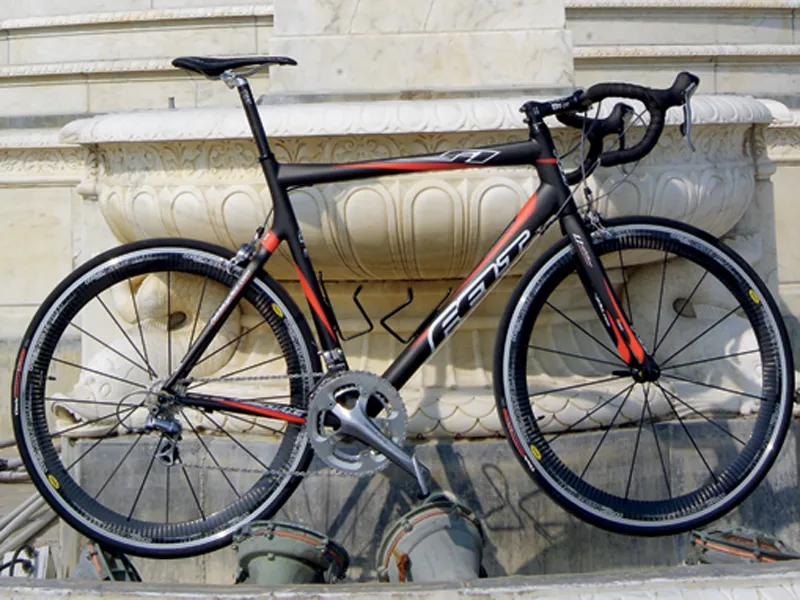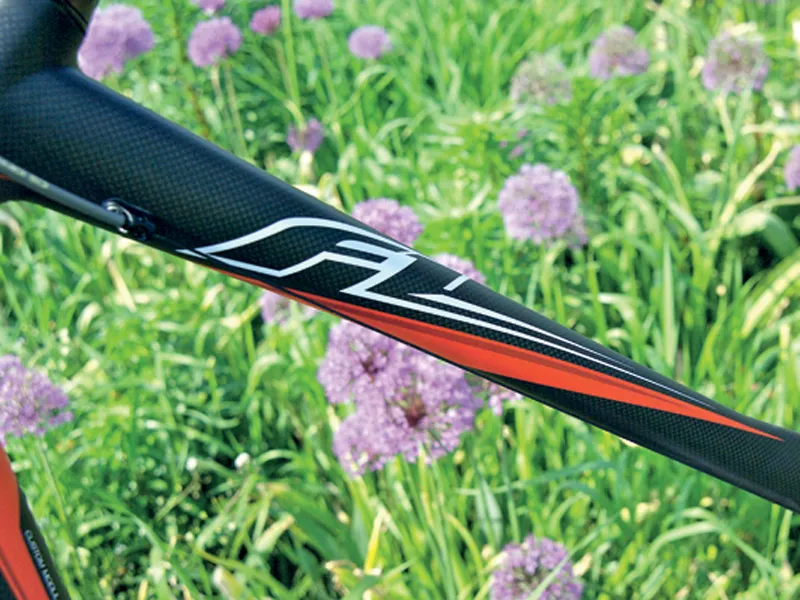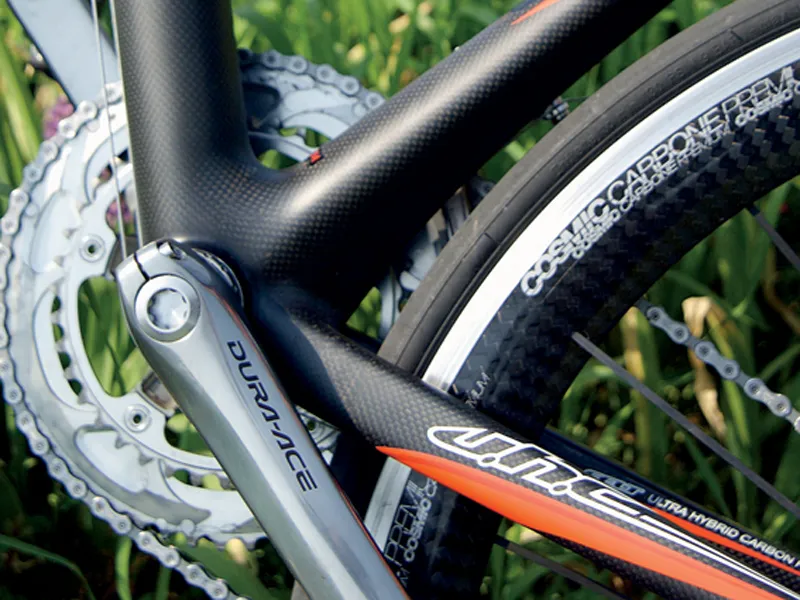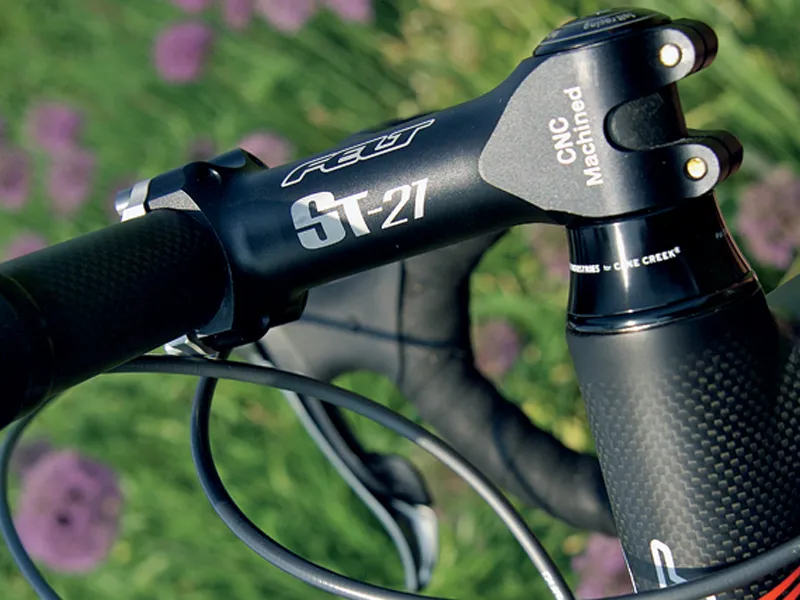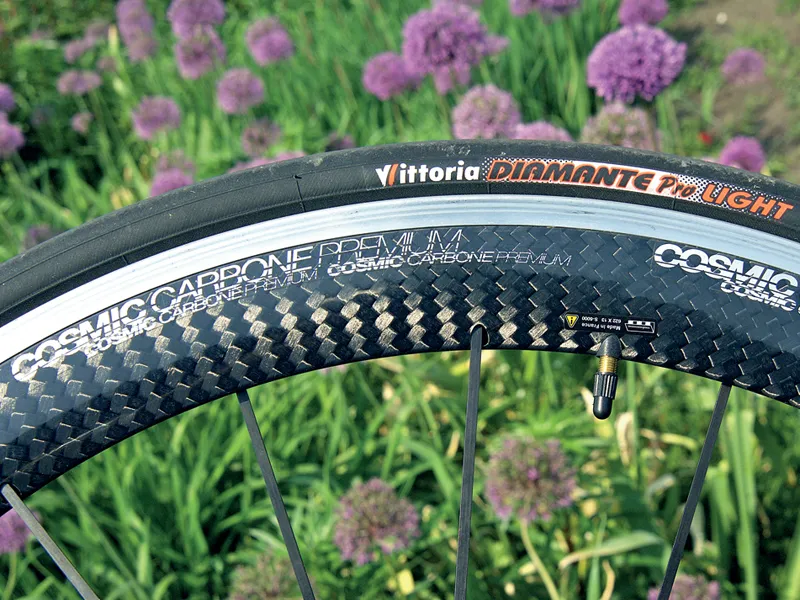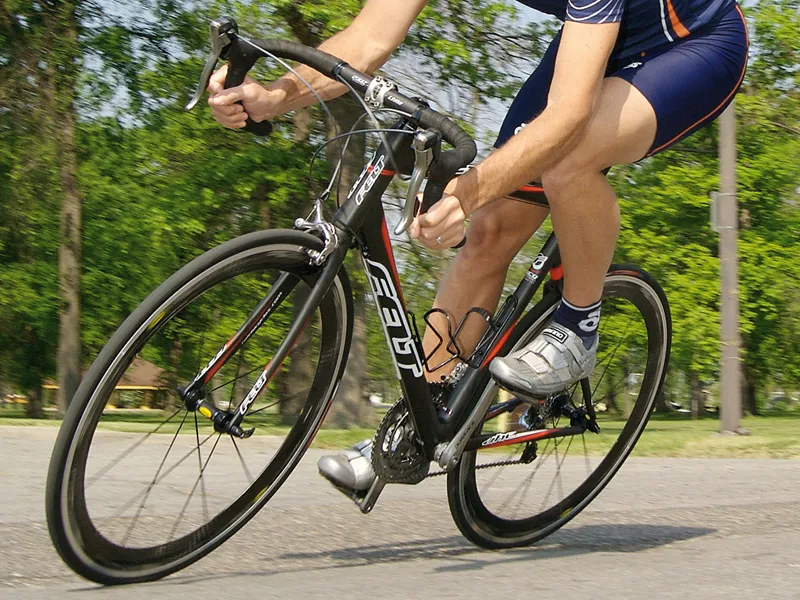An expert in welding, extensive knowledge of overlapping carbon fibre in specific weaves to maximise strength... Neither of these are skills I can boast on my résumé, which is one reason I am not a bike builder. I prefer to leave that to those in the know.
In the case of Felt bicycles, that wealth of knowledge comes from the man who lends his name to the company, Jim Felt. He began his career in bicycle design in 1991, equipped with a raft of mechanical expertise courtesy of his previous work in motocross. An amateur triathlon competitor, his love of the sport encouraged him to swap motors for manpower and focus on making time trial bikes. In 2000 he teamed up with Bill Duerhing and Michael Müllmann to form the Felt company, which, from its humble six-model beginning, now boasts 140 models distributed across 27 countries, including their flagship F1 model.
One thing I am qualified to do, given my years as a professional rider, is put a bike through its paces and assess its performance, and that's exactly what I did with the F1. The new model is a custom-designed modular monocoque frame that weighs in at less than 900g. Contributing to its low weight are Felt's all-carbon fork, steerer tube, crown and carbon drop-outs. Minus its wheels it was incredibly light. Even though I had the largest frame available, 60cm, it was still light enough to make a size zero model jealous.
The F1's date with destiny, or in this case the road, was postponed momentarily while I adjusted a few details. My test model was fitted out with a Ritchey seatpost and stem, but I had to swap the 110mm stem for a Felt 120mm. The toptube was a good length with a horizontal measurement of 60cm. This was good news for me as I'm taller than average, and meant that to get my normal riding position, although I had to change the stem, I didn't have to source an ultra-long one.
The F1 is a good balance between an edgy criterium ride and a more relaxed road ride. Its monocoque frame is stiff, but not to the point of being uncomfortable, making for a smooth ride.
>That sorted, the only thing left to do was put the wheels on. Fully kitted out, Felt's premier model weighed 6.76kg - less than the International Cycling Union's competition minimum weight limit of 6.8. >Time to ride... Belle Isle is an island park in the Detroit river, only 10 minutes outside Detroit city. Every year, a 24-hour, 200-mile bike ride is held there. It consists of about 66 laps around the island. While I had no intention of putting in anywhere near that amount of time on the F1's test ride, I did my fair share of laps - enough to give me an insight into this impressive racing machine.
The tubes on the bike are curved, flared and tapered in order to maximise its aerodynamic properties. The bike's design and matt carbon finish made it look like it could overcome any obstacle standing in its way. The only obstacle the F1 came up against during my test ride, however, was the wind, which it handled comfortably.
The F1 is a good balance between an edgy criterium ride and a more relaxed road ride. Its monocoque frame is stiff, but not to the point of being uncomfortable, making for a smooth ride. The test frame's geometry was such that I felt firmly centred on the bike. Its 74-degree head angle and 73.5-degree seat angle helped to make things comfortable, but given these relaxed angles, the bike also felt surprisingly powerful. The seat angle and length of the toptube didn't cause me any grief when it came to getting my desired riding position, either. Instead of throwing on a saddle and jamming it all the way back, as I'm used to doing, the relaxed angle forced me to take the more considered approach of measuring the setback and getting the stem length right. True, this did involve a little more effort than usual, but the end result was worth it.
Felt state that this is their stiffest bike to date, a characteristic that in practice was comfortably disguised. The F1 delivered mile after mile of smooth and effortless pedalling. Never far away, though, Jekyll and Hyde-style, was a rather more aggressive nature only too eager to burst forth when I stood on the pedals. My test bike wasn't as rigid as some other bikes - there was some movement in the front end, but not enough to make it feel soft - yet it moved well.
The Felt 1.1 Superlite carbon handlebars were great. I particularly liked the smooth, jointless design. Sprinting on the bike took a little getting used to, though, especially on the hoods. When I was out of the saddle, the bike had a tendency to lean to one side.
This could have been due to the 43-degree rake of the fork, which is on the steeper side of normal. I felt like my balance was off, too, but I soon got used to this. I've experienced similar balance issues with other bikes and it's generally just a matter of getting used to a new ride. When asked to comment on this, Felt's senior engineer, Jeff Soucek, explained that the hub's smaller offset from the steering axis will cause the bike to have greater wheel flop [the tendency for the wheel to turn when leaned] due to the increased distance of the tyre's point of contact behind the steering axis (also known as trail). When weighting the bars, as in an out-of-the-saddle sprint, this will be more noticeable. The trade-off is that the smaller offset will help high-speed stability due to the increased trail, and the resulting increased flop will let the bike carve better in a criterium-type situation.
The rear triangle is very small. This adds to the bike's stiffness and brings the rear wheel in close to the seat-tube. As a result, the F1 looks compact, but don't be fooled - it is a standard-sized bike. Its wheelbase length - 1,023.4cm on my 60cm frame - gave great whip on the bends. The F1 cornered brilliantly, always finding a good line and tracking through easily. And the faster I went, the better it handled them; a little push on the bars in a turn and the bike leaned right over without conceding any speed.
Accelerating out of the corners was also good despite the fact that the test bike was kitted out with what I consider to be lethargic wheels. The Mavic Cosmic Carbone SL Premiums supplied would not be my choice for this bike considering its super-responsive character. They rode nicely, and while the F1 responded well when it came time to take off, I couldn't help feeling its greyhound-out-of-the-box potential would have been even greater with a more appropriate choice of wheel.
There was a bit of play in the front wheel, but when I mentioned this to Mavic they explained that you can tune the bearings on the wheel allowing for a faster rotation with less play. I also found that the wheels made a strange whistling sound while I was riding. Mavic pointed out that the deep-section hollow carbon rims, by their nature, do hum and transmit noise from around the bike.
Given the cost of some bikes, getting into a crash or letting an airline baggage handling crew loose on your steed can be devastating. Felt have included a fully replaceable derailleur hangar on this model, making it easier to repair damage should the worst happen. Details such as this are worth bearing in mind if you're deciding which bike's worthy of a big spend.
As Felt's flagship model, it's no surprise to hear that the Pro Continental team Slipstream have been riding F1s this year. In its performance for the team, the F1 has shown itself capable of handling mountainous, 200-kilometre road races in Europe just as well as the ultra-fast criterium races in the US. But no matter whether you're competing in the professional ranks or riding for pleasure, if you've got the legs for it, the F1 will perform.
>
